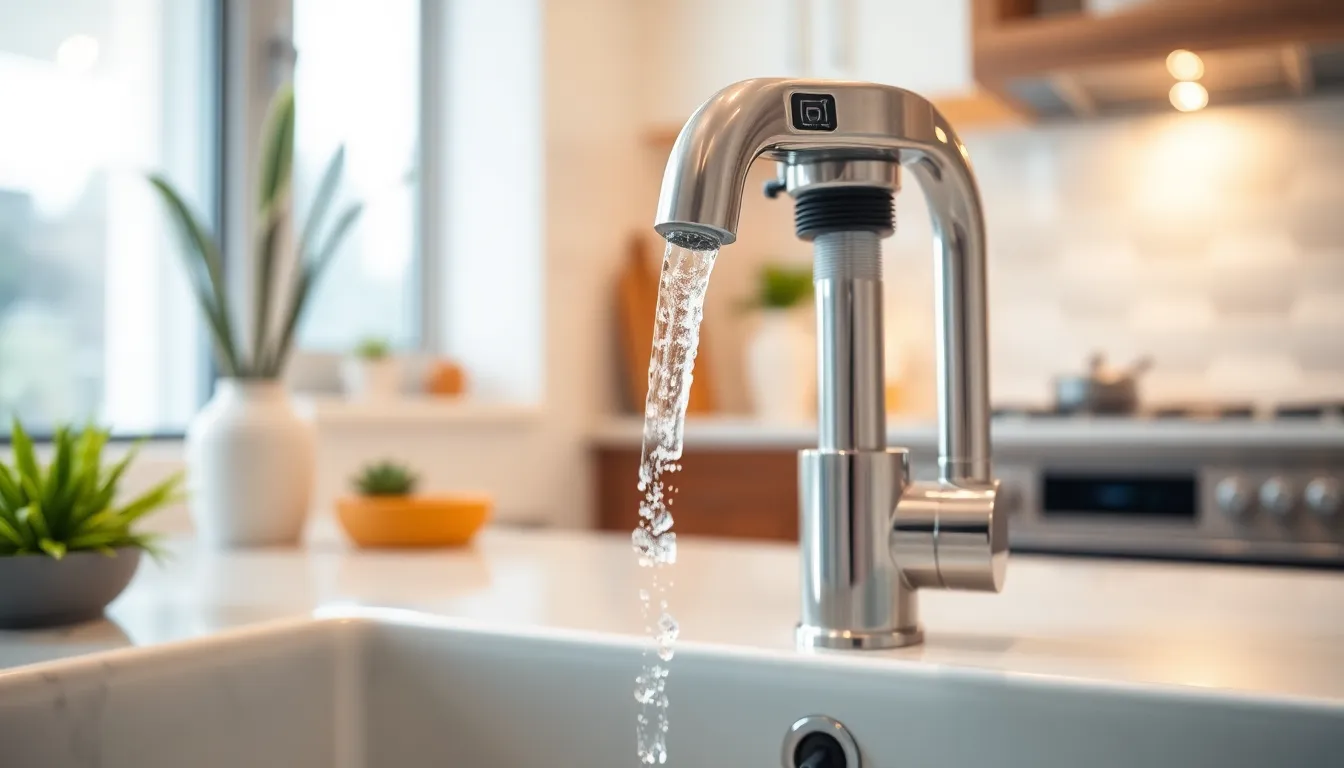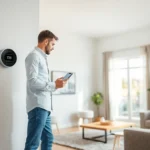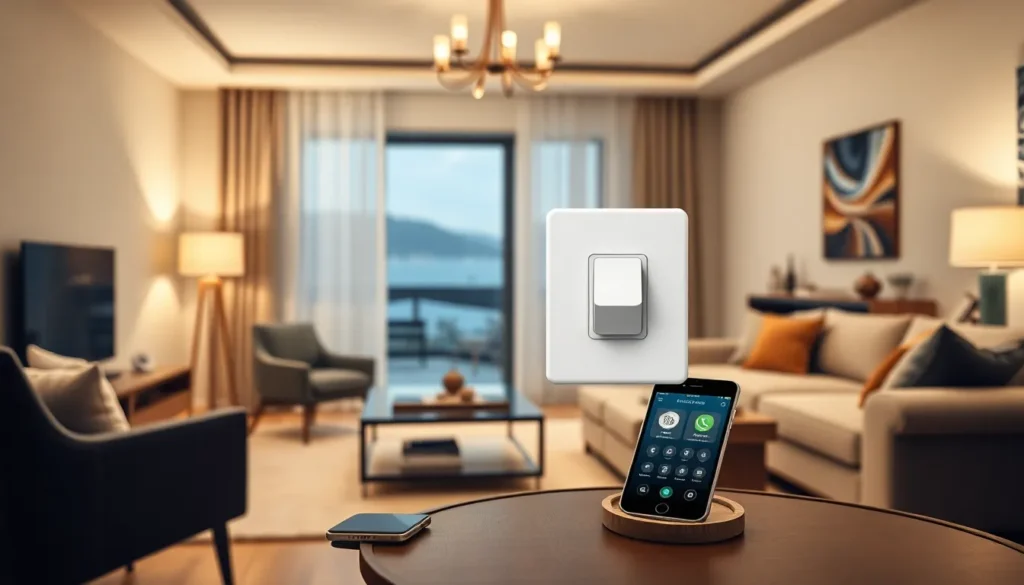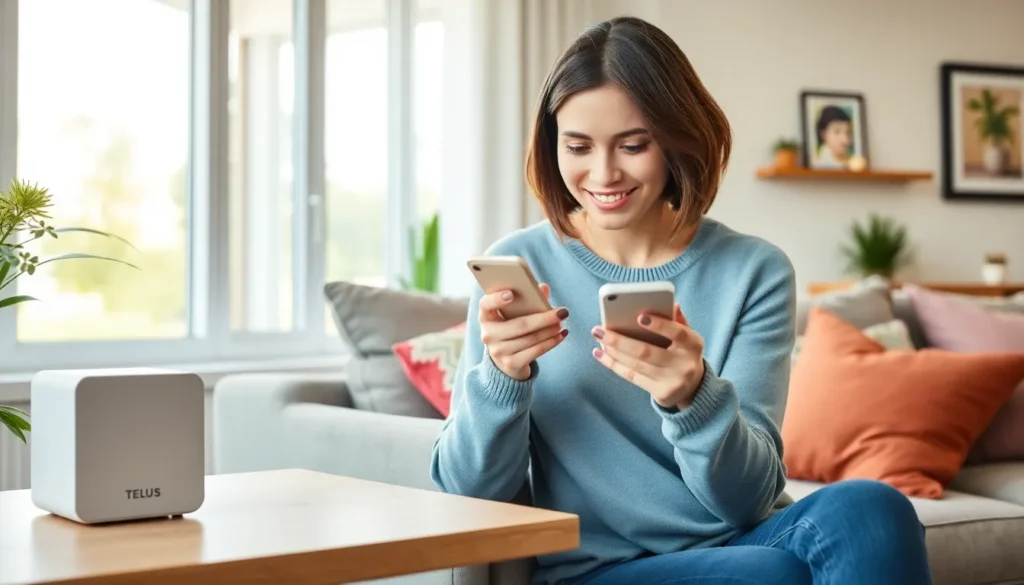Water’s the essence of life, but let’s face it—most of us treat it like a never-ending buffet. Enter water-saving devices, the superheroes of conservation that swoop in to save both the planet and your wallet. These nifty gadgets don’t just cut down on water waste; they also help you dodge those skyrocketing utility bills. Who knew saving the Earth could be so wallet-friendly?
Imagine turning your shower into a water-saving oasis or transforming your leaky faucet into a drip-free marvel. With a sprinkle of innovation and a dash of humor, these devices make conserving water feel like a breeze. So, why not let these eco-friendly gadgets do the heavy lifting while you sit back and enjoy the benefits? Dive into the world of water-saving devices and discover how easy it is to make a splash in conservation efforts.
Overview of Water Saving Devices
Water saving devices significantly reduce water usage in households and businesses. Faucet aerators decrease water flow while maintaining pressure, allowing users to enjoy water without waste. Low-flow showerheads provide an efficient way to enjoy showers while using less water, often reducing consumption by up to 50%.
Toilets equipped with dual-flush mechanisms offer users the choice of using a small or large flush, which saves water based on the user’s needs. Smart irrigation controllers automatically adjust watering schedules according to weather conditions, optimizing outdoor water use. Rain barrels collect and store rainwater, providing a sustainable resource for garden irrigation and other outdoor uses.
Dishwashers and washing machines with energy-efficient settings use less water than older models, promoting sustainability in daily chores. Leak detection devices alert users to potential leaks, preventing water loss and lowering utility bills. Additionally, gray water systems recycle water from sinks or showers for irrigation, creating a closed-loop system that benefits landscaping.
Embracing these devices leads to significant water conservation, proves beneficial for budgets, and supports environmental conservation. Investing in water-saving technology not only conserves resources but also fosters a culture of sustainability. Adopting such solutions contributes directly to reducing one’s environmental footprint and promotes eco-friendly practices in everyday life.
Types of Water Saving Devices

Various water-saving devices exist to help reduce water waste and promote conservation. Understanding these tools aids in making informed decisions for efficient water use.
Faucet Aerators
Faucet aerators attach to the end of taps, mixing air into the water flow. This design creates a steady stream while reducing water usage by up to 50%. Installing them is simple, and they typically fit most kitchen and bathroom faucets. Savings on water bills become noticeable, making them an economical choice for homeowners. These devices also maintain pressure, ensuring user satisfaction during daily tasks.
Low-Flow Showerheads
Low-flow showerheads supply water at reduced rates while delivering satisfying shower experiences. Users can save up to 60% of water compared to traditional models without compromising performance. These fixtures easily replace standard showerheads and come in various designs to match bathroom decor. Many models feature adjustable settings for different spray patterns. Choosing low-flow options significantly contributes to overall household water savings.
Dual-Flush Toilets
Dual-flush toilets offer two flushing options, allowing users to select a lower volume for liquid waste and a higher volume for solid waste. This function reduces water usage by up to 67% compared to standard toilets. Many modern options include advanced technology like pressure-assisted flush systems for improved efficiency. Installing a dual-flush toilet not only conserves water but also reduces wastewater, fostering sustainable practices in every home. Choosing this type enhances both functionality and eco-friendliness.
Benefits of Using Water Saving Devices
Implementing water-saving devices provides significant advantages for both the environment and personal finances. These gadgets enhance efficiency while promoting sustainable practices.
Environmental Impact
Water-saving devices play a crucial role in conserving vital water resources. Implementing such devices can reduce water consumption by as much as 50% in households. Lowered water use leads to reduced demand on local water supplies, positively impacting ecosystems. Using faucet aerators and low-flow showerheads significantly lessens water waste, lessening stress on wastewater treatment facilities. When implemented widely, these devices contribute to substantial reductions in water pollution and runoff. Their use often aligns with local and national conservation efforts, highlighting a collective responsibility towards environmental stewardship.
Cost Savings
Cost savings are evident when adopting water-saving devices. Homeowners often notice reductions in their monthly water bills by up to 30% after installing efficient technologies. Dual-flush toilets and energy-efficient appliances contribute to these savings by optimizing water use during each task. Investments in smart irrigation controllers lead to substantial cost reductions for landscaping needs as they manage watering schedules effectively. Government rebates and incentives might also be available, encouraging upgrades. Over time, these savings can accumulate significantly, enhancing budget flexibility for other essential expenses.
How to Choose the Right Water Saving Devices
Identifying the right water-saving devices involves considering several key factors. Assessing water usage habits helps in selecting appropriate devices tailored to specific needs. Evaluating the devices’ efficiency ratings provides insight into potential savings. Checking for certifications like WaterSense ensures products meet performance standards.
Reviewing installation requirements assists in determining whether professional help is needed. Comparing various brands highlights additional features and warranties offered. Seeking out consumer reviews can reveal real-life performance and longevity of devices. Prioritizing devices that provide measurable savings leads to more efficient usage.
Choosing faucet aerators and low-flow showerheads can yield substantial reductions in water usage. Selecting dual-flush toilets may improve efficiency with two flush options. Opting for smart irrigation controllers reduces overwatering and conserves resources when managing outdoor spaces. Investing in leak detection devices safeguards against unseen water waste.
Understanding the installation process can simplify usage, particularly with devices requiring DIY setup. Researching potential government rebates encourages investment in water-saving technology. Ultimately, making informed decisions about water-saving devices has a lasting impact on conservation efforts and household expenses. Utilizing these guidelines ensures a thoughtful approach toward efficient water use.
Embracing water-saving devices is a proactive step towards a sustainable future. These innovative tools not only help reduce water waste but also lead to significant savings on utility bills. By integrating devices like low-flow showerheads and dual-flush toilets into daily routines, individuals can make a meaningful impact on both their finances and the environment.
As awareness of water conservation grows, the adoption of these technologies becomes increasingly vital. Investing in water-saving solutions fosters a culture of responsibility and care for natural resources. With the right choices and a commitment to efficiency, everyone can contribute to a greener planet while enjoying the benefits of lower water costs.













